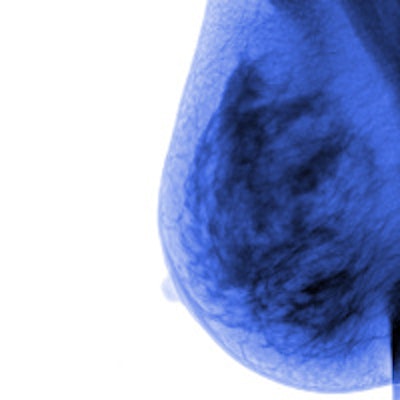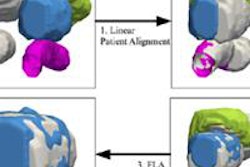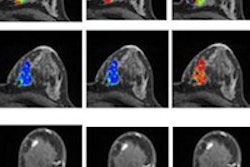
Image analytics software can be used to determine which women with breast cancers that are positive for the estrogen receptor (ER) need chemotherapy and which ones have nonaggressive cancers that only require hormonal treatment, according to research published online recently in Scientific Reports.
A research team from Case Western Reserve University used an image analytics algorithm to analyze dynamic contrast-enhanced MRI (DCE-MRI) breast studies. They found that it had an 85% correlation rate with an assay test that is typically used to categorize risk in these cancers.
The group, led by biomedical engineering professor Anant Madabhushi, PhD, believes that the technique could offer a noninvasive, fast, and inexpensive means of identifying the patients who would benefit from adjuvant hormonal and chemotherapy, without the expense and waiting time of genomic test results.
"Our results indicated that computer-extracted texture features of DCE-MRI were highly correlated with [assay-based] risk categories for ER-positive cancers," the authors concluded.
Deciding on chemotherapy
While nearly 70% of all breast cancer patients in the U.S. are diagnosed with ER-positive breast cancers, the majority don't need chemotherapy, according to Madabhushi. A genomic test called Oncotype DX, developed about 15 years ago, can differentiate between aggressive and nonaggressive cancer, but it requires sending a biopsy sample to a company (Genomic Health), which then analyzes it and assigns a risk score that physicians can use to guide treatment.
 Anant Madabhushi, PhD, from Case Western Reserve University.
Anant Madabhushi, PhD, from Case Western Reserve University."The test is used frequently in the United States, but it destroys tissue, requires shipping, and costs about $4,000," Madabhushi said in a statement. "The cost puts the test out of reach for people in middle- and low-income countries."
The researchers believed they could use big-data techniques to find useful signals that would differentiate aggressive and nonaggressive ER-positive breast cancers. For the study, they analyzed DCE-MRI studies of 96 women with ER-positive breast cancers. The patients had received 1.5-tesla MRI scans at two different hospitals and had also received the Oncotype DX genomic test (Sci Rep, February 18, 2016).
Because intensity values that are regularly used to analyze tissue vary by scanner, the Case Western team sought to apply a different approach for distinguishing between low- and high-risk cancers. They assessed the value of textural kinetics analysis, which measures dynamic changes in breast lesion texture during contrast uptake, for cancers considered to be low-risk (Oncotype DX recurrence score < 18) and high-risk (Oncotype DX recurrence score < 30).
The researchers found differences in gene expression that appeared as changes in tumor textural patterns on dynamic histograms. After quantitatively measuring these dynamic texture changes, they used the differences to determine which patients needed chemotherapy and which did not, according to the group.
These conclusions matched the Oncotype DX risk categories in 85% of patients.
"We identified a set of computer-extracted image texture features on DCE-MRI that appear to be able to segregate high and low Oncotype DX risk scores in ER-positive breast cancers," the authors wrote. "The texture features so identified may allow for noninvasively predicting which ER-positive patients might benefit from adjuvant hormonal and chemotherapy."
The team is now seeking funding for further research, including evaluating outcomes for the 96 patients to determine how accurately the image analytics approach and the genomic test predicted which patients needed chemotherapy. Madabhushi and colleagues would also like to apply the analytics platform to studies from other locations to see if the results are consistent.




















